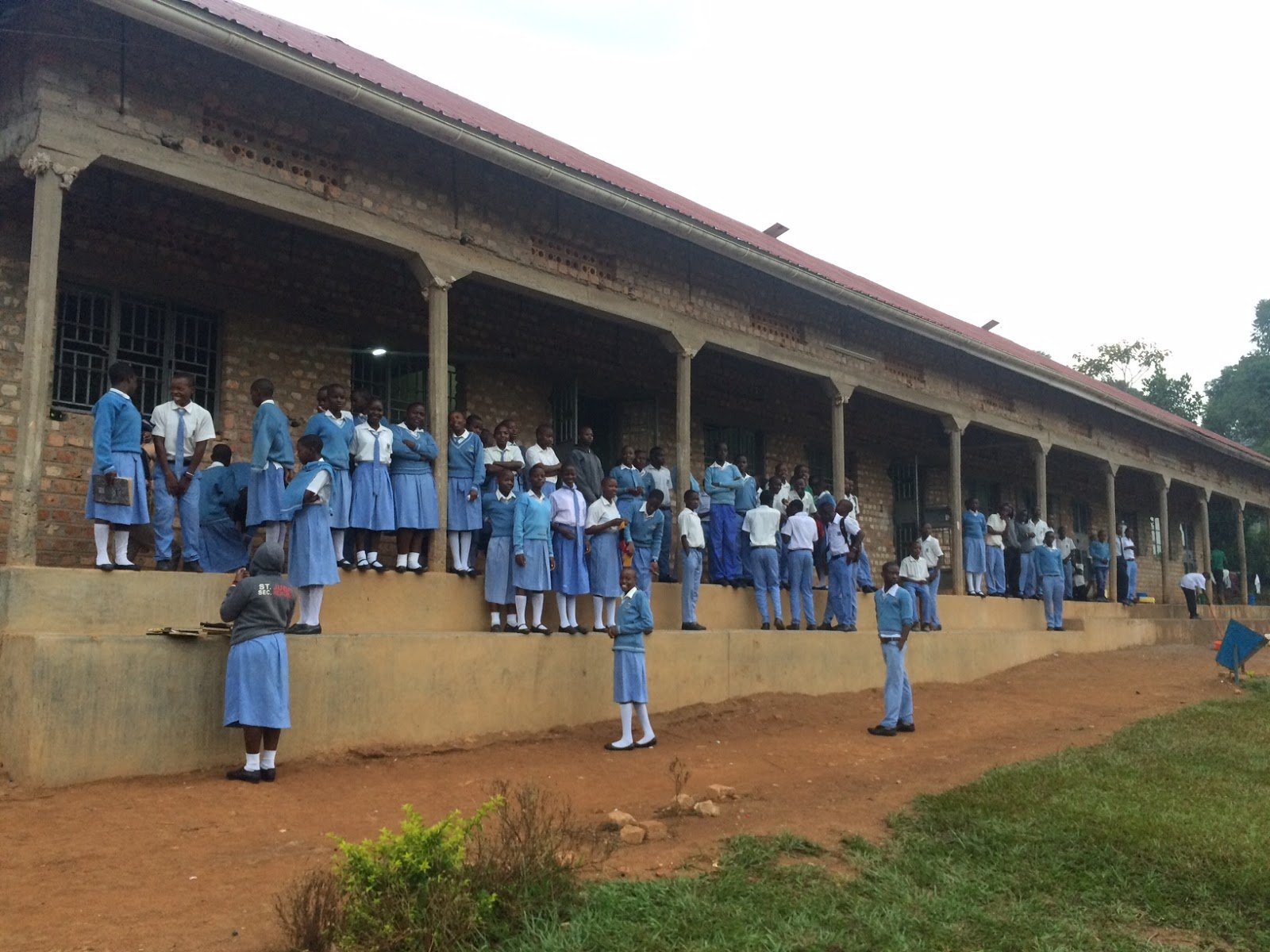Days 13-15 (Post 1): Lessons on Learning
Perhaps the most basic purpose for our trip is education. We wish to better inform our perspectives about the world in which we live and the people with which we share it. As students from Catlin who have the opportunity to come con a trip like this one, the resources and priorities of our educational institution immensely privilege us. This privilege can best be understood through our experiences in the various classrooms we encountered through our travels.
Our first school experience took place on our visit to St. Gertrude’s, a ten-minute walk from our lodgings at the clinic. Engeye had invested greatly in the school, building a water collection and dispensation system, installing solar panels, and connecting several students to foreign sponsors to help pay for the ancillary fees of school. At its height two years ago, four hundred kids had were enrolled in class. When we arrived, the school was a ghost town. The classrooms were dilapidated, the solar panels looted, there were now just thirty-six students enrolled. The phone number of the absentee headmaster had been hastily scrawled on the black board. St. Gertrude’s unfortunately stands as testament to the fragility of education in rural Uganda. Later that week, we visited the paragon of established success: St. Jude’s.
We arrived at St. Jude’s after a memorable in which of all thirteen of us crammed in to the back of Engeye’s makeshift ambulance van. Each every student on the trip was paired with an Engeye scholar, each dapperly outfitted in his or her white collared uniform and light blue sweater, as we began our day of shadowed classes. As Marvin, my fourteen-year-old host, lead me to his desk amidst the sea of 102 other students, he handed me a blank page from his class notebook. At St. Jude’s class consists of nothing but meticulous note taking in a verbatim transcript of what the instructor writes on the board, and learning consists of noting but wrote memorization of specific perspectives on academic materials. Students rarely ask unsolicited questions, and are hesitant to participate verbally in class. The instructors focus on the content and format of the national exam, with little interest for the intuitive understanding or engagement of the students. My discomfort grew as I considered that St. Jude’s was a university prep school primarily for the wealthy elite of the local area, in many ways similar to Catlin. If Uganda wishes to acquire a larger pool of skilled university graduates, it seems contradictory that even if a bright student is lucky enough to be born to a family which can send them to a school like St. Jude’s, the class format is such that only those who take organized notes and memorize the words of the teacher verbatim can have scores high enough to even get into university. I grew more grateful for my own privileged education, and more pessimistic regarding the future of Uganda’s youth.
The following day, we took an eight-hour bus ride full of wrong turns, sunsets, and seemingly excessive quantities of speed bumps, to the town of Bududa, near the Kenyan border. There we spent a day with 17-22 year olds enrolled in Bududa Vocational Academy (BVA) and orphans of all ages in the Children of Bududa program. Although we did not get to experience class as it was Good Friday, from our tour of the campus and extensive conversations with our Ex-Pat contact, and employee of the BVA, Kimberly, we found it could hardly be more different than St. Jude’s. The three largest programs of BVA are brick making, basket weaving, and female micro-finance. The goal of BVA is to provide young adults with skills which they can use to support themselves in a primarily substance based society with a saturated labor market. And it appears to be working; 80% of graduates from BVA are working. Although none of the students from BVA will go on to university, they nonetheless are acquiring the skills to better provide for themselves and their families. While many in the West dismiss vocational training as a means of proper education, the success of BVA appears to indicate the tangible personal and societal benefits.
Our final experience with education came the following day with the Children of Bududa. We sat in on their life skills class that occurs every other Saturday. During the ninety minute class on water safety, the class of forty discussed the dangers of water born illness, the rick factors of contamination ate each step in the water chain from source to consumer, and the best ways to protect one’s self and one’s family from the dangers of contaminated water. This class was very basic. But it was clear, tangible, and probably prolonged the lives of nearly every child in the room. These kids won’t become doctors of lawyers, but they will live healthier, and hopefully happier lives.
Every schoolroom is a miracle that with each passing year allows more children to gain the skills required for greater material stability. Girl’s will have fewer children, English will become more natural, and communities can gradually develop economic diversity. Catlin students at their best see their education as a means to better analyze, understand, and improve the world, and at worst see their education as a mean to get into a prestigious university. In Uganda the scales are markedly different. Education is about gaining access to the tangible blessings of health, provision, and opportunity, not a petty acceptance letter or self-actualization. Education in Uganda came transform the lives of students or crumble under the very rigors of existence. I sincerely hope the former can be true not only for all of Uganda, but for myself as well.
--Ian



